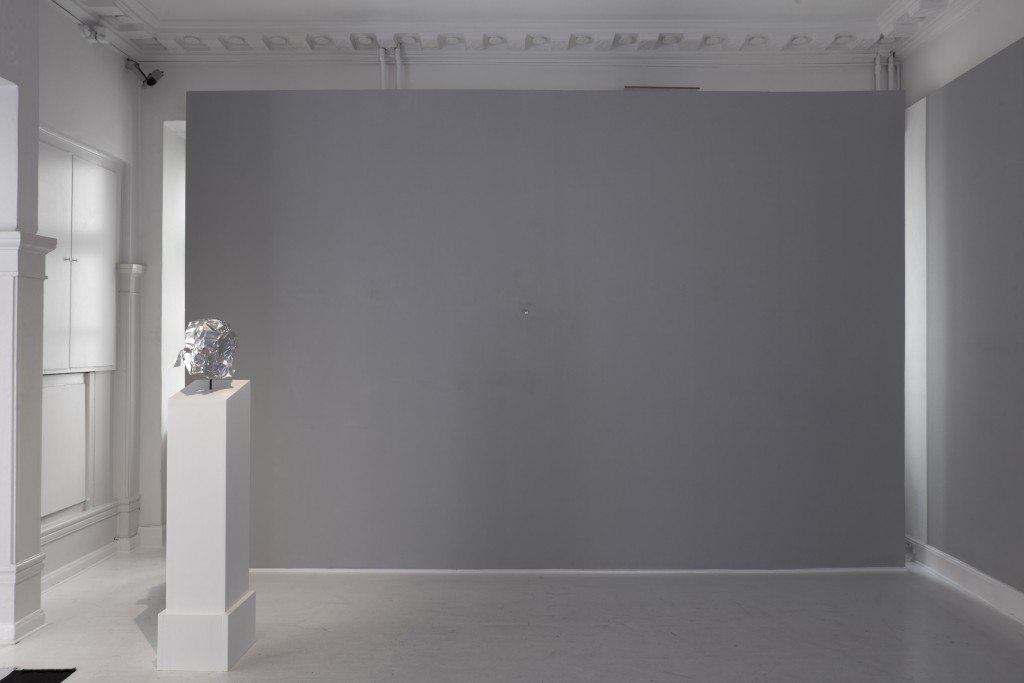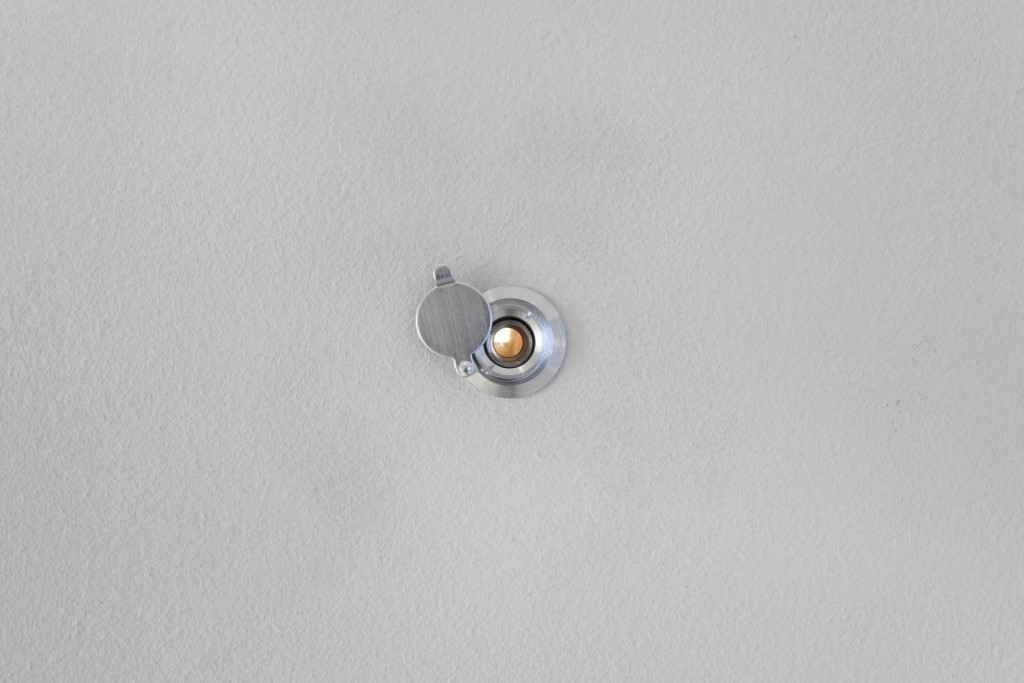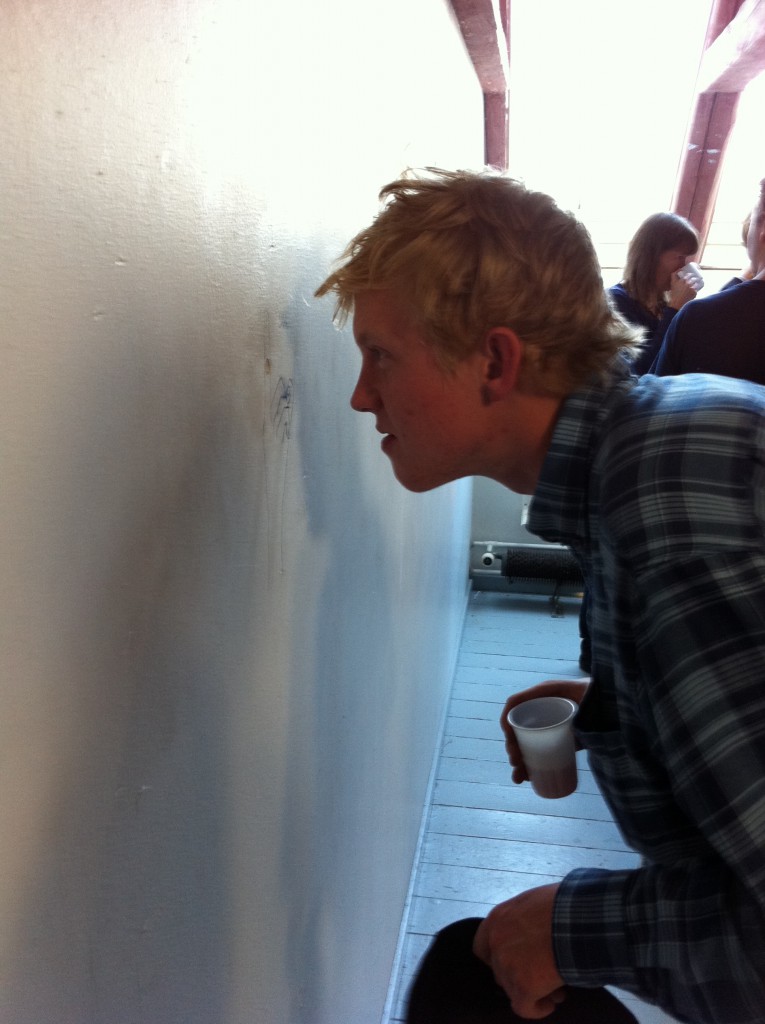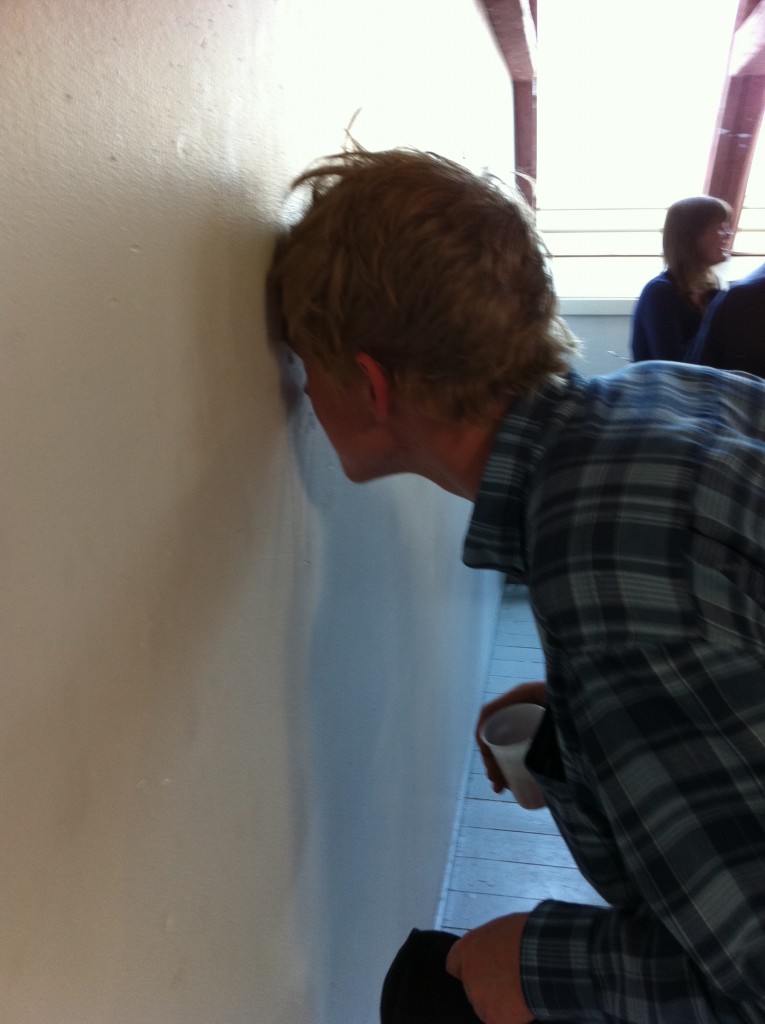
Peter Emil’s Room
Installation view – left: Tin Foil Helmet, podium
Installation view – middle: Peter Emil’s Room, door spy hole, scale model 25 x 25 x 20 cm
“Kids/youth room. My old room from around my communion. A room where the radiator was a recorder. Every time it made a squeaky sound/ the squeaky sound was that someone was listening and monitoring me.”
Peter Emil 2014.
Installation view – middle: Peter Emil’s Room, door spy hole, scale model 25 x 25 20 cm
Installation view – middle: Peter Emil’s Room, door spy hole, scale model 25 x 25 20 cm
Work in progress.
The model before installation.
On the difference between the personal and the private.
In art, it is important to tell a story, something that others are interested in hearing about, and there is not much more interesting than real stories. Wether this story is true is not as important as they contain a core of something learned that has its own internal logic. This inner logic found in or on the basis of the narrator’s own experiences, which can be retold more or less camouflaged or theoretical. These artifices can create a greater or lesser distance from the original experience, which depends on the narrator’s desire to share his personal experiences. The boundary between the personal experiences that can be shared with others and private experiences that are being hidden, is different from person to person and will very much help to shape the art.
The word private comes from Latin, private, deprive, deprive – as opposed to the public, ie state or community. The private is something that applies to the individual personally. Private may be property that no one else has the right to use, or it can be intimate thoughts or feelings that do not concern the public. There is a belief that every individual has something private, is something private and that about the individual lies a ‘untouchability zone “, as the philosopher KE Løgstrup puts it. As we see, none of these notions of the private are uncomplicated.
By contrast, the personal is almost a prerequisite for relevant art, where even seemingly “neutral” artistic statements contain traces of the artist’s personality. It would, among other things in isms as minimalism and conceptual art, actually explicitly try to avoid it personal in performance, but the artists’ own temperament still sneak into the works.





